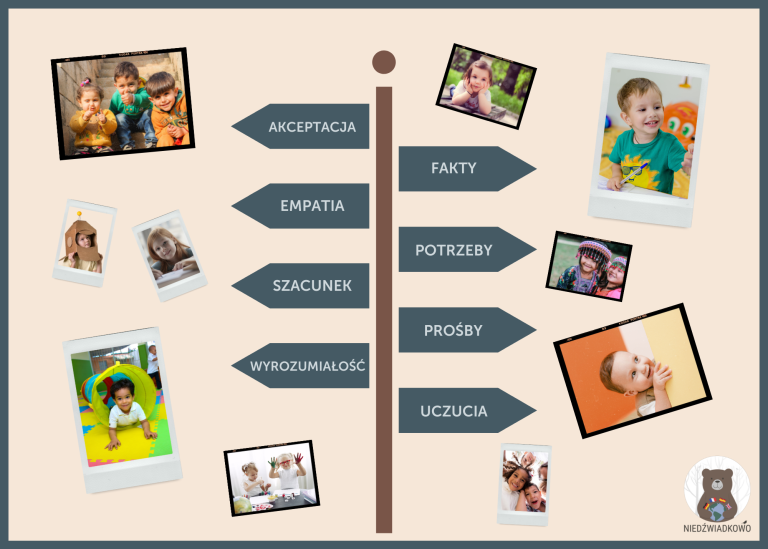In the first part of the series of articles about Non-Violent Communication I have given the basics of this extremely peaceful way of communication. It is already known where this trend came from, what it assumes and why it is worth using.
The second part is devoted to practical application NVC in everyday life.
IT WILL COME IN HANDY
Wanting to start using consciously Non-Violent Communication it is worth observing in the first place whether in our way of speaking:
- we use personal pronouns (I, you, he, she, it, we, you, they, they); SZCZEGÓLNIE WYKORZYSTUJĄC „JA” (np. „Czuję się źle, kiedy…”)
- the magic words "please", "sorry", "thank you" are present <3
- we formulate sentences in a conditional mode (e.g. "If everyone performed duties at home, I would feel...")
- we ask questions (e.g. "Why?", "For what purpose?", "What do you think about...?")
- we take into account the delicacies of the other person (e.g. "I know you like to eat nutella for breakfast, but I care about your health, so that's why I prepared a sandwich with vegetable paste." instead of "You won't get nutella!")
- most often we try to find the answer to the question "What is happening here?" – simply and according to reality, without nerves
What balance sheet? 😉
STEP 1
Najpierw powinniśmy świadomie przyjrzeć się temu w jaki sposób mówimy – odsyłam do zadania domowego z pierwszej części – o tu. 😉
STEP 2
If we get to what elements prevail in our communication, it will be much easier for us to eliminate not entirely correct wording. The easiest way to start the change is to express what is nice and pleasant FOR US (it is known ;)), using such sentences as:
- "I'm so glad you want to clean up your toys from all over the living room!"
- "I'm happy that I don't have to prepare breakfast for everyone at the weekend."
- "It's fantastic that everyone can take care of themselves and I have a free afternoon!"
Yes, yes. 😉 It's about saying what you see or want to see in a positive way. A bit like conjuring up reality, yes 😉, but how pleasant! 😉
IMPORTANT: It should be borne in mind that this is repeated REPEATEDLY during each day until it finally becomes natural. 1-2 times a day is not enough and will not bring the intended effects.
STEP 3
The most difficult, but at the same time introductory to the target level. If we have already mastered stage 2, we can start to introduce further elements to our statements – those that do not concern only pleasure.
Examples:
- "If the dishes were put in the dishwasher by everyone on a regular basis, I would feel calmer coming home after work, knowing that I would not find a full sink."
- "I feel bad when you raise your voice at me."
- "Why did you spill a kilo of sugar on the floor? (yes, also in such a situation 😉)
- "Why did you tear up the book? Do you think something can be done about it?"
- "I see you're angry. What happened?"
Also repeatedly, every day and until it starts to be natural!
TIPS AT EVERY STAGE
Let's note: when did we manage to introduce a language change, when it failed and why, how do we feel, what are the reactions of me, the Child, other members of the household? Such written tidying up for some time is really very helpful!
Nobody said that NVC is an easy art 😉 I will repeat that at the beginning of making a conscious change it is strange, uncomfortable, unnatural. This is normal and you just have to persevere in it. Eventually, this will become the norm. We will also notice that at some point the Child will start to absorb the "new language" from us and in the case of The Elders (it is best seen around 4-5 years of age) repeat!



